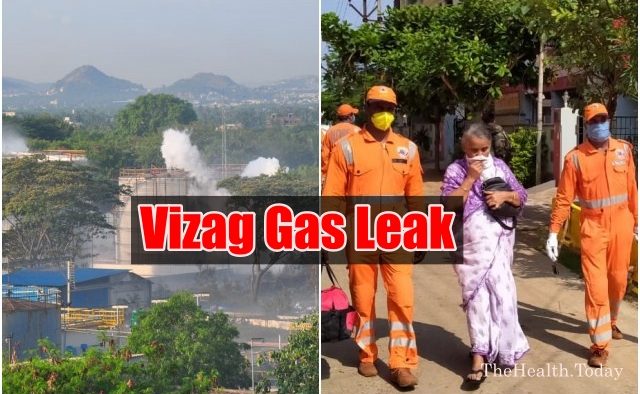Vizag Gas Leak: How Deadly Is The Styrene Gas?

A gas leak incident in Visakhapatnam (Andhra Pradesh) has claimed at least 11 lives and affected over 1000 residents living in five villages located near the source of the gas-leakage plant.
The styrene gas plant is owned by South Korean electronics LG from where the gas leaked in the wee hours. It is located at RRV Puram, Gopalapatnam nearly 15 kms away from the city.
As the leakage occurred at early hours in the morning, the several people were trapped along with animals and fell unconscious. The visuals were so horrific that it reminded the people of Bhopal Gas Tragedy (1984).
Shri Narendra Modi, Prime Minister of India, chaired a high-level meeting today morning to take stock of the steps being taken in response to the Vishakhapatnam gas leak incident. He discussed at length the measures being taken for the safety of the affected people as well as for securing the site affected by the disaster.
What is Styrene?
Styrene is a colourless, flammable liquid which is used to prepare polystyrene plastics, rubber and fibre glass. It is used in pipes, insulation, automobile parts etc.
Styrene monomer is used in the production of a wide variety of products in six broad resin categories: for building construction and packaging materials; for tires and automotive parts; for boats and tubs/shower stalls; for carpet backings and paper coatings; for household and office appliances and for housewares and battery casings.
Because of the extensive commercial use of styrene, people come into contact with styrene in air, food, water, consumer products, and waste materials.
Spain Styrene Case 1999:
On December 10, 1999, residents of a neighborhood at Castellón in Spain informed the local authorities that drinking tap water had a strong solvent-type smell and produced nausea and various other health symptoms when consumed. Drinking water was pumped to the apartments from a tank adjacent to a fire-protection water tank that was repaired and waterproofed some hours earlier.
Water samples were analyzed which indicated very high concentrations of styrene in samples collected during the second and the third day after the episode, with measured levels up to 900 μg/L.
Impact And Symptoms:
Studies evaluated the inhalation exposure which demonstrated that styrene is a strong irritant. Eye, nose and throat irritation is common at exposure levels above 50 to 100 ppm but can also occur at levels of about 20 to 30 ppm.
At very high levels chronic bronchitis type symptoms and other respiratory symptoms appear. Multiple central and peripheral acute nervous system effects have been described at levels of about 100 ppm but some neurological symptoms and color vision impairment may also appear at much lower levels. Effects on the liver (acute in animals, chronic in exposed workers), and the kidney and also genotoxic effects have been described at low levels. [pdf-embedder url=”https://thehealth.today/wp-content/uploads/2020/05/NGT_LGPloymeres.pdf” title=”NGT Order”]
Read also: Union Cabinet Approved Rs. 15000 Cr. For ‘India COVID19 Emergency Package’
First-aid Measures Given By Experts:
If swallowed, Do Not Induce Vomiting. Give large quantities of water. Never give anything by mouth to an unconscious person. If inhaled, remove to fresh air. If not breathing, give artificial respiration. If breathing is difficult, give oxygen. In case of contact, immediately flush eyes or skin with plenty of water for at least 15 minutes while removing contaminated clothing and shoes. Wash clothing before reuse. In all cases, get medical attention.

















